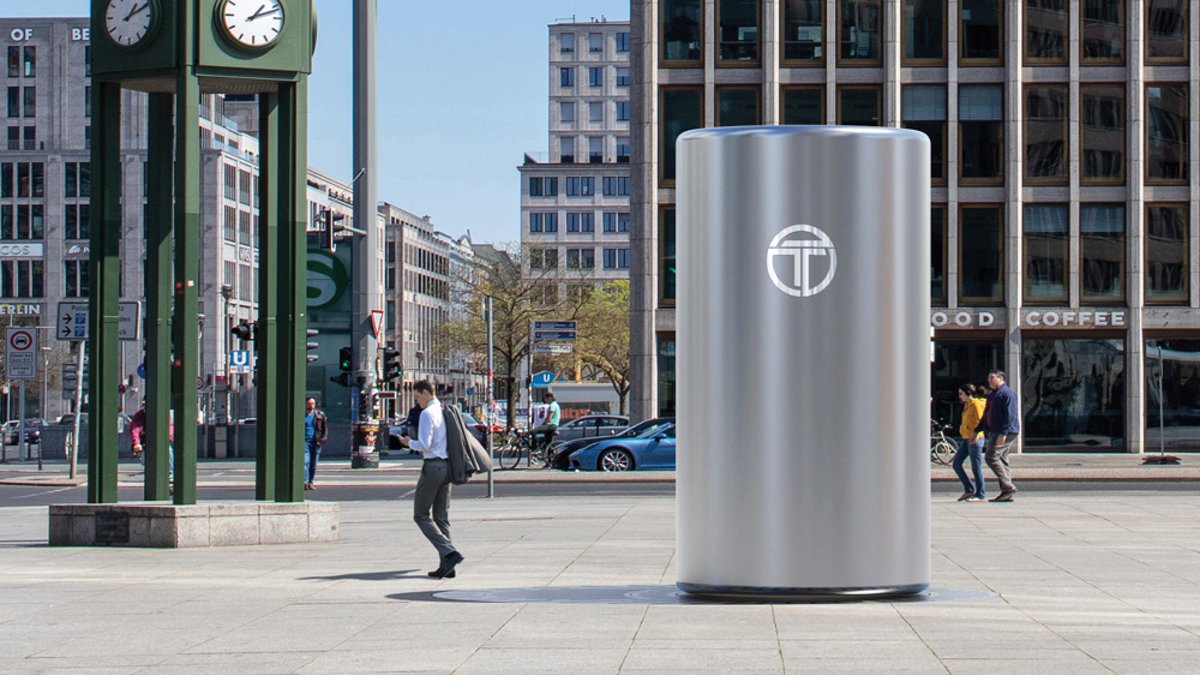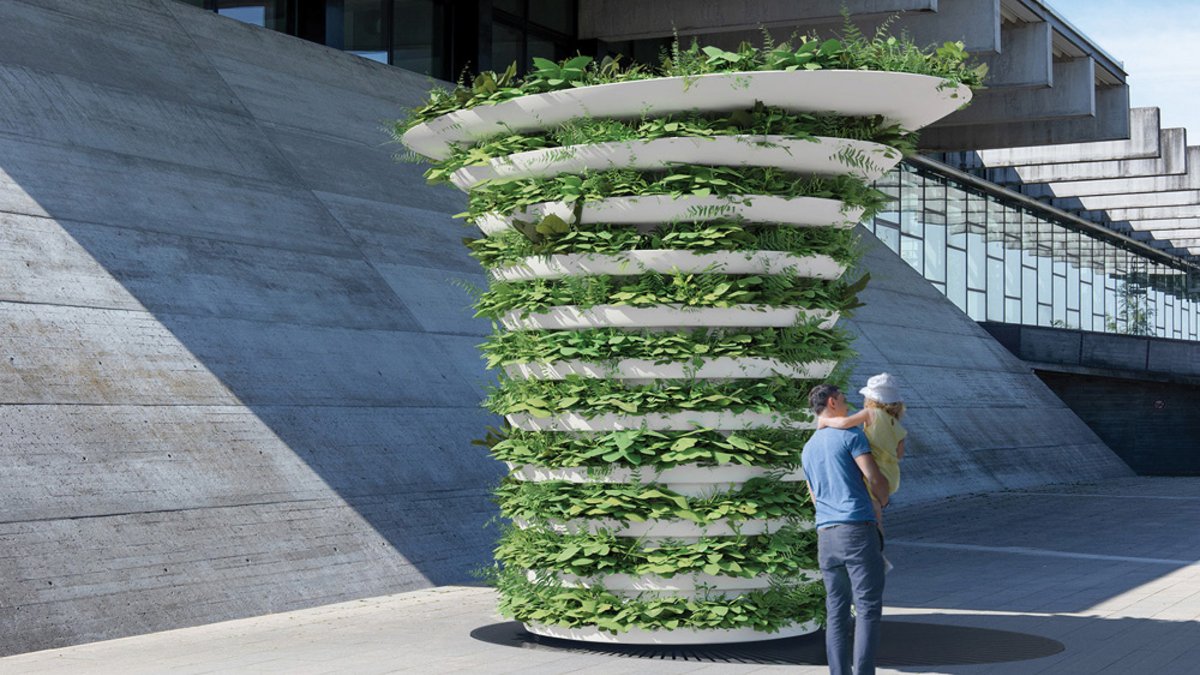
The T-cell is the relevant energy converter of the future, able to implement the requirements of the withdrawal from coal and nuclear power in line with sustainable climate policy.
As a decentralised energy provider, the T-cell uses existing infrastructure in a resource-oriented way and can be operated with renewably generated hydrogen. Its exceptional efficiency directly ensures reduced pollutant emissions. The T-cell can be integrated into public areas as a compact unit or operated as a cluster, scaled to meet high demand. It is designed for Industry 4.0 production methods. Its modular character allows decentralised production and easy, targeted use.
Design diversity for public areas
T-cell design variants - pictures: Department of architecture and visualisation
Because of its versatile external shape, the T-cell emerges as an enrichment for both city and environment. Its varied design meets a range of different user wishes and produces a signalling effect in climate policy.
The open design concept of the T-cell gives decentralised energy supply a new face. Up to 80,000 compact units will be integrated into our surroundings in architecture, city and landscape. The T-cell requires no additional structural shell and can be placed either in buildings or outdoors. Depending on the application, different functions and design variants are chosen for the outer shell. In public, the T-cell appears to be self-confident and offers various benefits whilst sustainably providing electricity and heat.
This innovative and so far unique combination of energy conversion and public benefit with direct and noticeable value added should mean that the T-cell immediately meets with acceptance. In everyday life, it is experienced as “benefit plus energy” and emerges as an enrichment for architecture, city and landscape. As such, it embodies the image of economic, ecological and energy policy progress.
Technology for the energy revolution
The T-cell combines the technologies of a micro-gas turbine and a solid oxide fuel cell, and can be operated CO2-neutrally in the long term.
Power is generated by the T-cell in a synergy of fuel cell combustion and conductivity. Oxygen is fed through a ceramic membrane into a synthesis gas that contains hydrogen. This is where the combustion process is triggered and electrical power is generated. By generating heat and electricity at the same time and recovering waste heat that arises, more energy can be gained from a constant volume of fuel than in pure turbine or fuel-cell systems.
The high efficiency of the technology is the result of the compact arrangement of the components in line with the temperature requirements, within a chamber system. To meet demand, the waste heat generated is fed back into other components. A central heat exchanger heats the intake air with heat from the emerging exhaust gas. With this technology the T-cell achieves the world record for electrical efficiency.
Can be used immediately - for clean energy

The T-cell is geared towards existing resources and can be used immediately with the existing infrastructure.
For the purpose of ecological and economic sustainability, the T-cell uses the existing gas network as a supply source and thus allows resource-oriented use that stabilises the network on the road to a climate-neutral green gas network. Moreover, by introducing it into the existing gas and electricity industry infrastructure, it can immediately be used comprehensively, without impairing existing systems. The T-cell is helping to shape the switch to a green gas energy supply, as it can be powered by sustainably generated fuels that contain hydrogen.
Advantages at a glance











